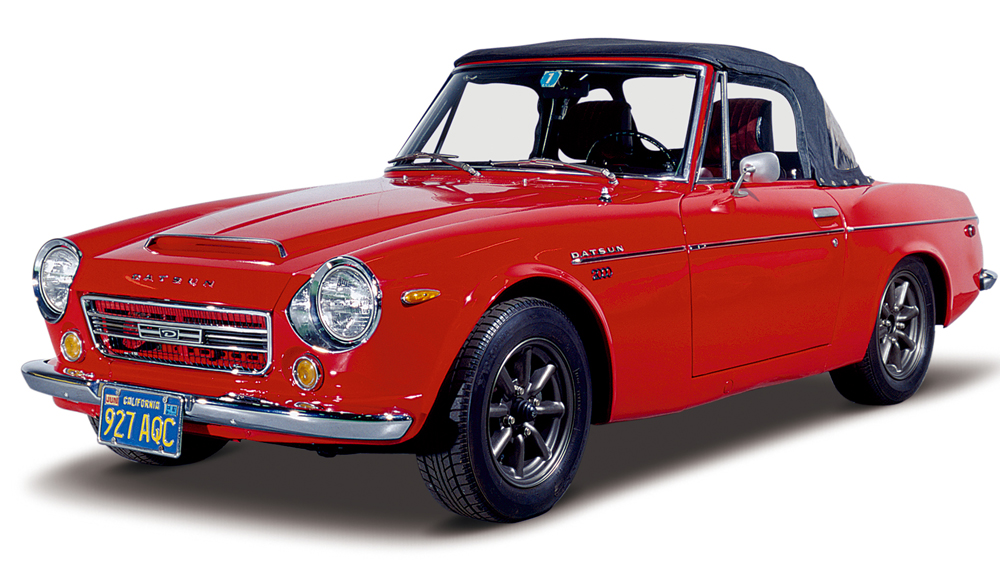
No.217 Fairlady 2000 (1968 : SRL311)
In March 1967, the powerful 2000 series was added to the Fairlady lineup (sold alongside the 1600). It was powered by the 4-cylinder in line U20 engine (OHC, 1,982cc). Equipped with twin Solex carbs it delivered a maximum output of 145PS, and its top speed of 205 km/h was the best in Nissan’s history at the time. The vehicle shown is the left-hand drive American export model with SU twin-carb engine (125PS).
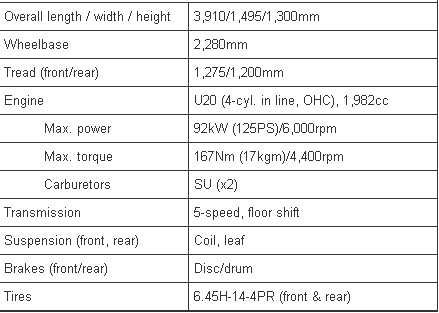

Origin of the Fairlady name
The Fairlady pedigree is intimately connected with the development of the sports car in Japan. In 1961, the then president of Nissan, Katsuji Kawamata, was in the US when he chanced to hear of the Broadway musical “My Fair Lady”, which was enjoying a long run. At the time, Nissan was planning to launch an improved version of the Datsun sports car (SPL213) in North America, and the President thought it would be a good idea to name the car “Fairlady” in the hope that it would prove to be similarly popular.
The Fairlady’s predecessor, the Datsun Sports (S211), had indeed been popular when exhibited two years earlier, in 1959, Los Angeles Imported Car Show. Exports to the US had just started, so the new name given to this improved version helped with the promotion, and as a result there was a surge in sales.
The SPL213 – the first-generation Fairlady, with a 1,189cc engine (60PS) – was launched in 1961. The SP310, often mistaken as the first-generation model, was actually introduced in the following year; it had a 1,488cc engine (71PS) and cost 850,000 yen. The Fairlady Z with a closed body was launched in 1969.
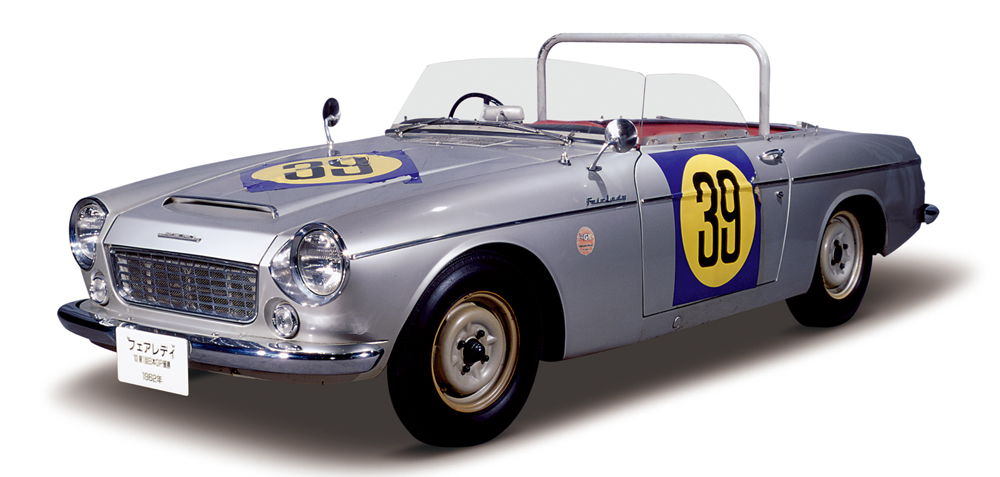
No.030 Fairlady 1500 (1962 : SP310)
The history of Japan’s modern motor sports began with the 1st Japan GP Race (1963, Suzuka) and this machine was the winner of the B-II race. The driver was G. Tahara, who later became Sports Car Club of Nissan Chairman. Although the car was based on the Datsun 310 chassis (first-generation Bluebird) with the Cedric’s engine, its fame spread as an authentic sports car.

Fairlady and the 1st Japan Grand Prix
In May 1963, the 1st Japan Grand Prix Race was held at the recently completed Suzuka Circuit, watched by a huge crowd of 200,000 fans. It was Suzuka’s first big race and the atmosphere was electric. Driven by G. Tahara, the Fairlady 1500 (SP310) was entered in the Sports Car Race B-II (1,301-2,500cc).
Having come in 3rd in the official qualifier, Tahara managed to dash ahead at the start of the main event, taking the lead and staying there all the way to the checkered flag. In this class the foreign cars had been considered to enjoy an absolute advantage, but the Fairlady 1500 had succeeded in shaking off the pursuing Triumph TR4, MGB, Fiat and other renowned sports cars. And with the best lap (3min. 14.4sec.) also to its credit, the Fairlady’s victory was complete.
It was a memorable day in the history of Nissan, but it was also a glittering achievement for the Japanese automobile industry as a whole. In a fair contest of performance and skill, Japan had beaten the best sports cars from the countries that had always been top in the field. Japan could now consider them as equals.
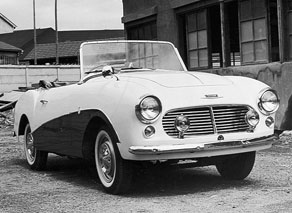
Development of the Datsun Sports S211 was completed in the summer of 1958, and it was launched in June 1959. It comprised the chassis of the Datsun 211 (988cc, 34PS engine) with an open 4-seater body made from FRP. The top speed was 115km/h.
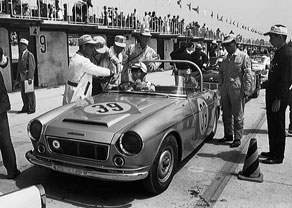
The victorious Fairlady 1500 driven by G. Tahara at the 1st Japan GP had a Type G engine. The addition of SU twin carbs (US spec.) had increased its power from 71PS to 80PS.

You must be logged in to post a comment.